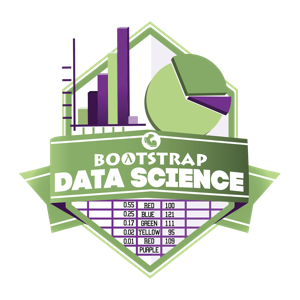English
add translation
Bootstrap:Data Science


Unit 1Students are introduced to Tables in Pyret, and learn about Numbers, Strings, Types, Operations, and Function Application.
Unit 2Students choose their dataset, and begin to explore. In the process, they learn how to write their own definitions, first defining static values and then complete functions. They are also introduced to the Design Recipe: a structured approach to solving word problems and defining functions.
Unit 3Students extend their knowledge of functions to include methods, and learn about Table methods for sorting, filtering and extending Tables. They are also introduced to Table Plans (a structured approach to manipulating tables), and begin manipulating their own datasets.
Unit 4Students construct Bar and Pie Charts in Pyret, to visualize the quantities present in rows of their dataset. They experiment with these visualizations in a contrived dataset, apply them to their own research, and interpret the results. They also begin to write their own Sample Tables
Unit 5Students learn how to measure central tendency (using mean, median, and mode), as well as variation (visualizing quartiles with box plots). After applying these concepts to a contrived dataset, they apply them to their own datasets and interpret the results in their research papers.
Unit 6Students explore new visualizations in Pyret, this time focusing on the frequency of observations in their dataset. They learn how to construct and interpret Frequency Bar Charts and Histograms, experiment with these visualizations in a contrived dataset, apply them to their own research, and interpret the results.
Unit 7Students investigate scatter plots as a method of visualizing the relationship between two axes, and begin searching for correlations in their dataset.
Unit 8Students compute the "line of best fit" using linear regression, and search for correlations in their own datasets.
Unit 9Students write a scaffolded research paper, pulling output from their programs and their students workbooks to create a coherent narrative.
Teacher-Only Resources - We also offer several teachers-only materials, including an answer key to the student workbook, a quick-start guide to making the final project, and pre- and post-tests for teachers who are paticipating in our research study. For access to these materials, please fill out the password request form. We’ll get back to you soon with the necessary login information.
Standards Alignment - Find out how Bootstrap aligns with Common Core Standards for Mathematics, as well as the standards for Mathematical Practice.
Support Forums [Announcements | Discussion] - Want to be kept up-to-date about Bootstrap events, workshops, and curricular changes? Want to ask a question or pose a lesson idea for other Bootstrap teachers? These forums are the place to do it.
